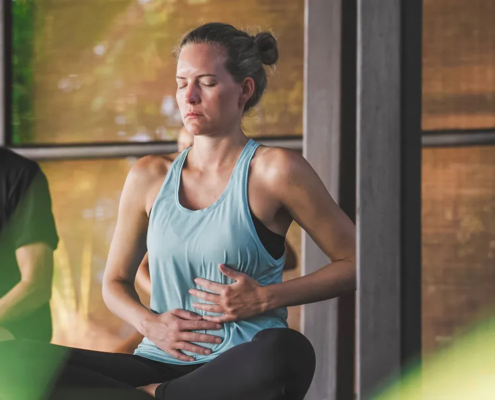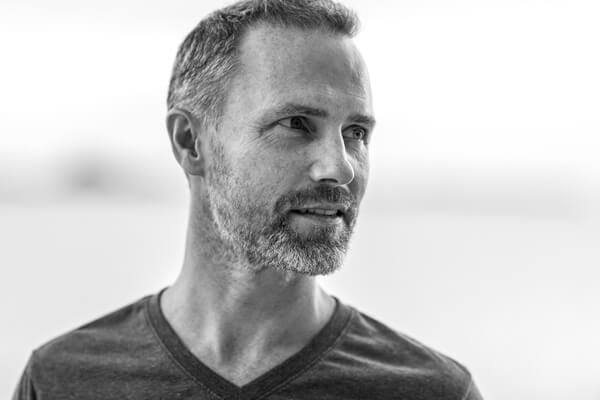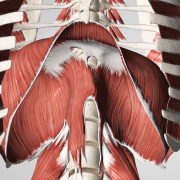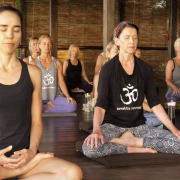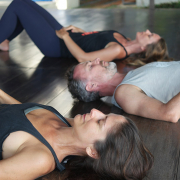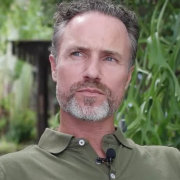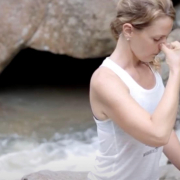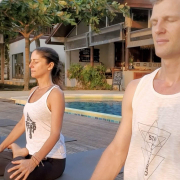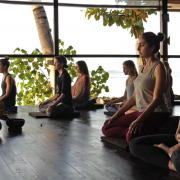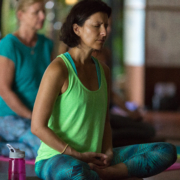 https://samahitaretreat.com/wp-content/uploads/2023/11/IMG_6969-scaled.jpg
1707
2560
Kirsten Mia
http://samahitaretreat.com/wp-content/uploads/2024/01/samahita-logo-v2.svg
Kirsten Mia2023-11-08 18:27:412023-11-08 18:27:41Biohacking – Optimize your Wellbeing.
https://samahitaretreat.com/wp-content/uploads/2023/11/IMG_6969-scaled.jpg
1707
2560
Kirsten Mia
http://samahitaretreat.com/wp-content/uploads/2024/01/samahita-logo-v2.svg
Kirsten Mia2023-11-08 18:27:412023-11-08 18:27:41Biohacking – Optimize your Wellbeing.Yoga, Breath and COVID-19: lifestyle behavioral support mechanisms Part 1
PART ONE: the initial facts
Approaches to manage the physical and psychological burden of stress from living through and after the current global pandemic
The emergence of a novel coronavirus SARS-Cov-2, the cause of the disease now known globally as COVID-19, has infected over 6 million people in 188 countries, of whom at least 369,433 have died as of May 31, 2020 (1). As a result governments around the world have taken unprecedented measures socially and economically, deemed appropriate to “flatten the curve” of this pandemic. With the goal to curb the spread of infection and help prevent healthcare systems from being overwhelmed social distancing, stay-at-home orders, mandatory mask wearing, travel restrictions, and isolated ways of living and daily behavior have become both the norm and a necessary mass action to tame a global crisis.
A. The Broader Psychological and Physiological Impact of the COVID-19 Pandemic
The description so far only tells us of the physical cost in terms of disease risk, infection, and mortality and the measures countries have taken to prevent this from infecting more people. Given the number of countries that have implemented shut-downs and similar actions the true number of people affected by the crisis is more likely over 6 billion. Everyone is deemed at risk for infection and so are all candidates for the ongoing physical measures and upcoming vaccines. What is not reported in the data charts for this disease are the lifestyle challenges, the psychological stress burden, and the possible future mental health crises that may emerge in the coming months to years.
Beyond the economics of the global crisis, what is the psychological and emotional burden of these events now, a year from now, and even a generation from now, and how can they be addressed from the point-of-view of the living individual? The latest Stress in America 2020 report from the American Psychological Association predicts long lasting and serious negative mental health effects from the coronavirus pandemic (2). It particularly highlights the stress burden on parents of children under 18 who are faced with childcare, work and schooling demands. Certain sub-populations have been shown to be more vulnerable, such as lower socio-economic groups, the elderly, and males to name a few.
“What is not reported in the data charts for this disease are the lifestyle challenges, the psychological stress burden, and the possible future mental health crises that may emerge in the coming months to years.”
B. Yoga as Comprehensive and Regular: beyond yoga’s ‘pose’ and ‘flow’ dilution
Yoga as a philosophy and body of practice techniques is referenced and documented in more or less greater detail across primarily Sanskrit-based texts for the past 2,500 years (3). The traditional explanation of yoga and delivery of its teachings has been most frequently presented in a context of human psychological and physiological suffering: mental difficulty, emotional instability, psychological burden, uncontrolled senses, a distracted mind, an inability to focus, an incapacity for situational appraisal, anxiety and stress, and physical illness. A consistent description of the experience of yoga throughout the literature at different historical timepoints is mental equilibrium, a centered state of being, the meditative state. The Sanskrit word for meditation (‘dhyana’) is deeply embedded within yogic philosophy and teachings whereby it is quite clear that the yogic process and meditative process are the same: a skillful management of the mental faculties till the yogic, or meditative, experience is reached, a complete centeredness, which we may translate as mental equilibrium and harmony within a normal range of change across physical and psychological aspects of being.
The process of yoga involves yogic-meditative practices that cultivate this experience and state. However, the shifting emphasis on different practice techniques over the centuries was in response to societal needs rather than the efficacy and value of one technique over another. The past 100 years has witnessed the main attention on practices cultivated in the previous 700-900 years on body and breath meditative practices, known as Hatha yoga. Starting 90 years ago, but most commercially and popularly effective in the past 20 years, a minor element of this approach gained strong association with the physical activity market and as such has seen worldwide growth where a diluted translation of yoga has become synonymous with ‘pose’ (posture, asana) and ‘flow’ (erroneous interpretation of vinyasa).
Yoga identified as ‘pose’ and ‘flow’, often executed in terms of physical fitness, is only one element of a comprehensive yoga practice approach outlined in the original texts to manage and balance both the physiological and psychological aspects of our being. ‘Yoga’ as a popularly engaged in recreational activity has been published in the scientific literature with documented benefits to health and well-being. As a recreational activity it is a subjective decision with no greater efficacy and value than walking, running, chess, free-diving to satisfy and achieve a degree of personal well-being. If we are to discuss yoga practice as a behavioral lifestyle aid to the current psychological burden of stress then it needs to be framed within a comprehensive approach that engages the practitioner across a mixture of techniques capable as a whole to cultivate physiological and psychological resilience, not at just one measured time point of a typical body-based approach at the end of four weeks, for example, but developing over the long term. This is the position of the original teachings.
The key elements of such an approach are one, comprehensiveness with mental awareness, and two, regularity. Any guidance from a qualified instructor should be on the specifics of what to do and the encouragement to build a regular routine for it. Therefore, it can still occupy a recreational equivalent time commitment but with an emphasis on quality over quantity, ‘how’ more so than ‘what’. To reliably advise yoga practice, which includes breath and meditative techniques, for lifestyle behavioral effects, either through therapy or as part of research, to both relieve the burden of, and increase the resilience to, stress then these key elements are the focus and not the popularly perceived ‘pose’ and ‘flow’ effort. In short, 7 days of 10 minutes of a comprehensive yoga practice is worth more than 70 minutes one day in that week. The remaining challenge is having the skillful guidance to instruct 10, 20, 40-minute practices to be done very regularly incorporating a correct approach to posture, breath, and inner awareness.
“The traditional explanation of yoga and delivery of its teachings has been most frequently presented in a context of human psychological and physiological suffering: mental difficulty, emotional instability, psychological burden, uncontrolled senses, a distracted mind, an inability to focus, an incapacity for situational appraisal, anxiety and stress, and physical illness.”
C. COVID-19 Disease Burden: high inflammation, organ dysfunction, psychological trauma
Wang et al. recently identified three primary drivers of cardiac injury that can occur when infected (4): direct infection of cardiac tissue possibly due to the increased expression of ACE2 receptors in the heart; an excessive immune response that triggers a cytokine storm that can lead to multiple organ dysfunction; pre-existing cardiovascular morbidities that become aggravated and can lead to some of the aforementioned serious issues. This and other recent studies indicate inflammation as both an initial outcome of an overzealous immune response and a prime culprit in worsening the condition further. Infected individuals can experience high fever, blood clotting, blood vessel leakiness, abnormally low blood pressure and a lack of oxygen which leads to excessive acidity of the blood, to a potential pleural effusion where fluid builds up in the lungs (5). The majority of deaths due to COVID-19 are a result of respiratory failure originating in the inflammatory response. Inflammation ultimately affects healthy tissue leading to Multiple Organ Dysfunction Syndrome (MODS) eventually causing the lungs to shut down under Acute Respiratory Distress Syndrome (ARDS). Complicating the scenario even further is that COVID-19 can cause serious cardiovascular issues such as heart attacks, heart failure, and strokes due to blood clots (6).
This burden of health care handling by professionals has led to added stress on health care workers from multiple areas. Longer shifts, greater loss of life, a lack of personal protective equipment, increased isolation from a typical support structure of family out of fear of infecting them, and anxiety over job security has led to increased mental strain and greater burnout and fatigue (7). Attention is now being drawn to the impending psychological trauma amongst health care workers as the next crisis (8).
Read the other parts of this article:
Yoga, Breath and Covid-19: lifestyle behavioral support mechanisms
Approaches to manage the physical and psychological burden of stress from living through and
after the current global pandemic
PART TWO: drugs, infrastructure, and yogic self-awareness
PART THREE: Yogic Behavioral Support via Body, Breath and Mind
PART FOUR: the Power in Yoga’s Approach to Upgraded Breathing
Increase your understanding about the breath and explore the recommended practices
9 Benefits of Correct Breathing and Doing Breathing Exercises
Breathwork for Anxiety and Other Difficulties
Specific Guided Ratio controlled Breathing Exercises:
Bi-Ratio Breath Exercise
Tri-Ratio Breath Exercise
Quad-Ratio Breath Exercise
Dr. Paul Dallaghan’s expertise with breathwork, body and meditative practices comes from three sources: (1) three decades of daily dedicated practice and teaching these techniques; (2) uniquely acknowledged in the Yoga tradition by the title of “Master Yogi-Prānācharya (expert in breath)”, following an immersion in the original culture through one-on-one direct training in practice and study of ancient texts; (3) a PhD in doctoral scientific research at a leading US university (Emory) covering both the tradition and science of yoga and breath practices in terms of stress, health and aging. As a result, Paul occupies a unique space to impart genuine teaching and science on the breath, body, and meditative practices, seen as a Teacher-of-teachers and identified to carry on the tradition of Pranayama. His sincere and ongoing role is to teach, write and research, to help put out experienced and authentic information on these areas of how we live, breathe and be, to help people improve their mental and physical health, and live more fulfilling lives.
For more on his background see his bio
References
- JHU COVID-19 Resource Center. (2020). Available online at: https://coronavirus.jhu.edu/map.html
- Stress in America 2020 report
American Psychological Association
https://www.apa.org/news/press/releases/stress/2020/report - Katha Upanishad
- Front. Cardiovasc. Med., 30 April 2020 | https://doi.org/10.3389/fcvm.2020.00078
Cardiovascular Impairment in COVID-19: Learning From Current Options for Cardiovascular Anti-Inflammatory Therapy
Wang et al. https://www.frontiersin.org/articles/10.3389/fcvm.2020.00078/full - Peng Xie, Wanyu Ma, Hongbo Tang, Daishun Liu. Severe COVID-19: A Review of Recent Progress With a Look Toward the Future. Frontiers in Public Health, 2020; 8 DOI: 10.3389/fpubh.2020.00189
https://www.frontiersin.org/articles/10.3389/fpubh.2020.00189/full - Brit Long, William J. Brady, Alex Koyfman, Michael Gottlieb. Cardiovascular complications in COVID-19. The American Journal of Emergency Medicine, 2020; DOI: 10.1016/j.ajem.2020.04.048
- Farzan Sasangohar, Stephen L. Jones, Faisal N. Masud, Farhaan S. Vahidy, Bita A. Kash. Provider Burnout and Fatigue During the COVID-19 Pandemic. Anesthesia & Analgesia, 2020; 1 DOI: 10.1213/ANE.0000000000004866 https://journals.lww.com/anesthesia-analgesia/Citation/9000/Provider_Burnout_and_Fatigue_During_the_COVID_19.95693.aspx
- Jillian Mock, Scientific American, June 1, 2020
Hero worship alone doesn’t protect frontline clinicians from distress
https://www.scientificamerican.com/article/psychological-trauma-is-the-next-crisis-for-coronavirus-health-workers1/
More from the Samahita Blog
